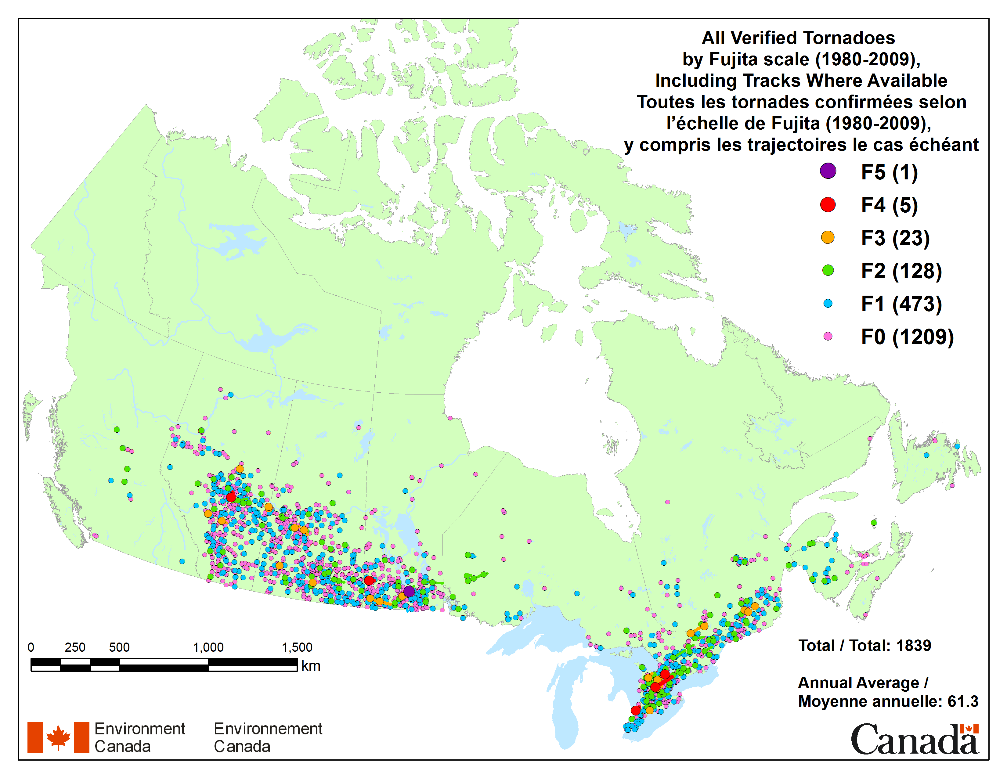In the collective imagination, tornadoes are quite mysterious, arousing both curiosity and fear. We regularly hear of devastating events in regions prone to tornadoes, such as the famous tornado alley extending from northeast Texas to south-central Oklahoma.
However, Quebec also has a record of being hit by tornadoes. In fact, on July 22, 2024, there are already 8 tornadoes confirmed since the beginning of the season by the Northern Tornadoes Project team, including 5 in a single day: June 13.
A complex challenge for forecasting
Even today, tornadoes strike without warning, causing widespread damage. Predicting them remains a major challenge for the scientific community.
For meteorologists, the small size of tornadoes and the many complex processes involved in their development make their accurate prediction difficult. In terms of the overall climate, the challenge is even greater, because climate models can’t represent them directly.
To be able to identify projected trends and offer a chance to better prepare for tornadoes, studies have to focus on changes in the ingredients required for tornadoes to arise: an increase in the instability of the atmosphere linked to warming, greater air humidity, and wind shear.
Wind shear refers to the variations in wind speed and/or direction depending on altitude. It can induce rotation within a storm, transforming it into a violent system called a supercell, which can in turn produce violent tornadoes.
There is a potential link between climate change and wind shear. Arctic warming reduces surface air temperature differences between the circumpolar Arctic and the middle latitudes. This affects the jet stream and, theoretically, reduces wind shear at the middle latitudes.
To learn more about storms and light:
What about in Canada and Quebec?
Although tornadoes are less frequent in Canada than in the United States, they still pose a threat to certain regions, particularly the Prairies and areas located near the U.S. border. The corridor from Windsor to Québec City, including Toronto and Ottawa, is particularly at risk. Tornado season runs from April to September, with events concentrated in June and July.
Thanks to the development and improvement of the weather radar network in recent decades, more tornadoes are being detected. However, it’s important to note that this increase does not necessarily mean that more tornadoes are actually happening.
The Northern Tornadoes Project is working to improve the Canadian tornado database. To do this, researchers assess the damage caused by events and analyze satellite images to identify tornadoes that occurred in remote areas.

All confirmed tornadoes in Canada for the period 1980-2009 and their strength according to the Fujita scale. Source : Environnement et changements climatiques Canada.
What about the consequences?
In recent years, a few tornadoes have been recorded in Quebec municipalities such as Mirabel, Saint-Thomas and Très-Saint-Rédempteur. Although most of them caused damage to infrastructure and ecosystems in their path, these events sometimes have more dramatic consequences, as was the case in 2021 in Mascouche, when there was a death.
More observations doesn’t mean more tornadoes
Although one can have the impression that tornadoes are arising more frequently in Quebec, it’s actually a question of increased observation and study rather than a real increase in their number.
Advances in detection systems, combined with a larger population and more inhabited regions, have enabled a more complete inventory of information. While this situation is encouraging, it also highlights the complexity of tornadoes, making adaptation and prevention difficult.
However, there is hope. Thanks to the extensive information now available and the development of higher resolution climate models, these fascinating events will likely be better understood in the coming years.